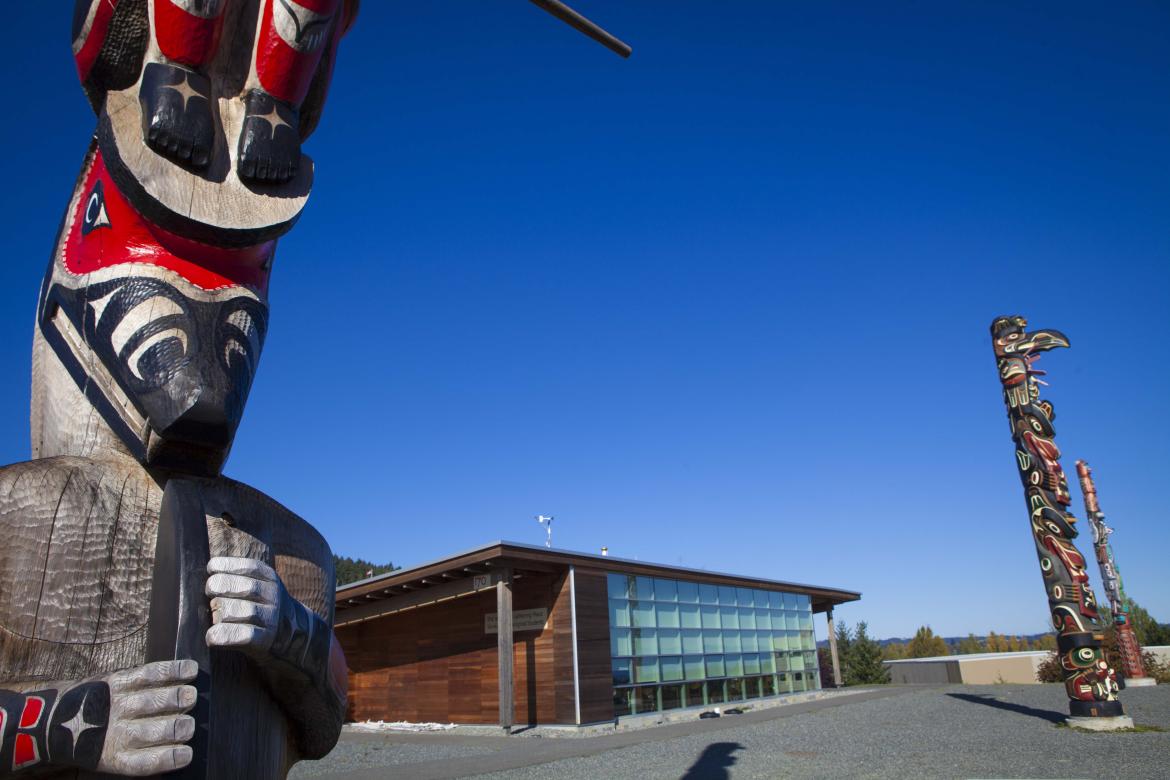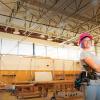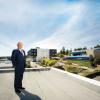
January 8, 2018 - 4:15pm
“The only path to reconciliation is one that begins with recognition.”
– Douglas White III, Director of VIU’s Centre for Pre-Confederation Treaties and Reconciliation
When Canada’s Truth and Reconciliation Commission released their report in 2015, there was a clear call to educational institutions to take responsibility for leading the way in addressing the challenge of reconciliation between Canada’s Indigenous peoples and non-Indigenous peoples.
What does reconciliation mean at VIU? It starts with acknowledging history and traditions, valuing contributions, celebrating success and building relationships. It means working together, supporting access to post-secondary education and making education relevant to all learners.
“Education will play a key role in building a path to reconciliation with Canada’s Indigenous peoples,” says Dr. Ralph Nilson, VIU President and Vice-Chancellor. “As an educational institution, VIU takes that responsibility very seriously. We need to ensure education is delivered in a way that is relevant and seen as a tool of emancipation, of building knowledge, and of bringing people and organizations together, rather than what it has been in the past – a tool of oppression.”
For years, VIU has worked towards providing a welcoming and relevant education for all, including Indigenous students, from Shq’apthut, VIU’s Aboriginal Gathering Place, to the Elders-in-Residence and the ‘Su’luqw’a’ Community Cousins Aboriginal mentorship program.
Reconciliation Road: Join the Journey with VIU was another step along that path. Reconciliation Road was a series of events and activities planned in the fall of 2016 to build understanding around the challenging and critical work of reconciliation. Visit viu.ca/reconciliationroad for more info.
“The Reconciliation Road events, such as the Witness Blanket exhibit, speak to the truth of our history, of Canada’s history,” says Gary Manson, VIU Elder-in-Residence and Snuneymuxw First Nation member. “They speak to what the colonizers did; and speak to the spirit of our survivors. To understand this fully, it will take time. It will mean coming back to this topic many times, in different ways. This is powerful work, and it is right that an educational institution – VIU – is taking this work on, making it possible for our communities, Indigenous and non-Indigenous, to come together to learn, which I hope will lead to understanding.”
In September 2017, VIU embarked on the next stage of this journey with the start of a unique learning partnership to support Indigenous youth. In partnership with the Rideau Hall Foundation, the Mastercard Foundation and Yukon College, and in collaboration with Indigenous community partners and learners, the goal is to increase Indigenous student engagement and success in post-secondary education. Visit viu.ca/learning-partnership for more details.
“What I’ve seen at VIU is the opportunity for real partnerships, the opportunity to be an equal partner at the table for planning and ensuring the traditional protocols of the Snuneymuxw First Nation are followed,” says Emmy Manson, a VIU alumna and one of the new Indigenous Education Navigators hired as part of the learning partnership.
A Progression in Indigenous Education
1970
A lecture series starts with the goal of having Indigenous leaders teach their own culture and history using their own words and experiences.
1971
An Indigenous group performs a traditional dance at Malaspina’s convocation – a first for any BC college convocation.
1974
Fran Tait, Tsimshian from Lax Kw’alaams, is hired as a Native Student Counsellor Aide.
1980
Malaspina College gave Tamagawa University in Tokyo a totem pole carved by renowned artist Reg Davidson to represent an enduring relationship between the two institutions.
1990
Ruth Kroek (University-Transfer Program, Arts ’79), a member of the Cowichan Tribes, is hired by Malaspina as Native Programs and Services Coordinator for the Cowichan Campus.
1994
The school starts the Arts One First Nations program, the first of its kind in BC with a focus on First Nations culture and history; 91 students enroll. One of the first Elders-in-Residence, Auntie Ellen White from the Snuneymuxw First Nation, is appointed to this program.
1995
The Child and Youth Care First Nations program begins at VIU Cowichan.
Louise Underwood, from Cowichan Tribes, is appointed Elder-in-Residence for this program.
2005
The position, Director of Aboriginal Education, is created.
2006
Sharon Hobenshield, a member of the Gitxsan First Nation, is hired as Director of Aboriginal Education.
The first Aboriginal Recognition Ceremony to celebrate Indigenous students completing degrees, diplomas and certificates is held.
VIU awards an Honorary Degree to Auntie Ellen White.
2007
The Institution submits an Expression of Interest for VIU’s first Aboriginal Service Plan, a provincially funded initiative aimed at enhancing educational experiences and outcomes for Indigenous learners.
2008
VIU becomes the first university in BC to appoint an Aboriginal chancellor: Chief Shawn A-in-chut Atleo, a member of the Ahousaht First Nation, who became National Chief to the Assembly of First Nations in 2009.VIU’s Elders-in-Residence began opening Convocation with drumming, a welcome prayer and song.
VIU participates in Tribal Journeys for the first time, paddling from Fort Rupert to Cowichan for the North American Indigenous Games. The first meeting of VIU’s Indigenous alumni group
takes place in October.
2009
VIU Elders-in-Residence host a gathering for Elders who work at post-secondary institutions on Vancouver Island. The first-time gathering includes Elders from the University of Victoria, Camosun College and North Island College.
2010
The first phase of Shq’apthut, VIU’s Aboriginal Gathering Place, opens.
VIU awards an Honorary Degree to Elsie Paul, a Tla’amin First Nation Elder from Powell River.
2011
The ‘Su’luqw’a’ Community Cousins Aboriginal Mentorship Program begins with funding from the Counselling Foundation of Canada.
2013
The University appoints the first full-time Elder-in-Residence.
Snuneymuxw Elder Geraldine Manson, a part-time Elder-in-Residence for six years, has her role expand to support students in the Faculty of Health and Human Services.
The University appoints the first full-time Elder-in-Residence.
Snuneymuxw Elder Geraldine Manson, a part-time Elder-in-Residence for six years, has her role expand to support students in the Faculty of Health and Human Services.
2014
VIU establishes a Centre for Pre-Confederation Treaties & Reconciliation. Douglas White lll is appointed Director.
2015-16
Three totem poles representing the three major language groups on Vancouver Island – the Kwakwak’wakw, the Nuu-chah-nulth and the Coast Salish – are raised at Shq’apthut.
2016
VIU launches Reconciliation Road, a series of events and activities aimed at engaging people in dialogue about reconciliation.
2017
A new learning partnership with Rideau Hall Foundation, Mastercard Foundation and Yukon College is announced to increase Indigenous student engagement and success in post-secondary education.
*This article originally appeared in the Winter 2017-18 edition of VIU Magazine. Check out more stories inn the VIU Magazine.
Tags: Aboriginal | Reconciliation | VIU Magazine






